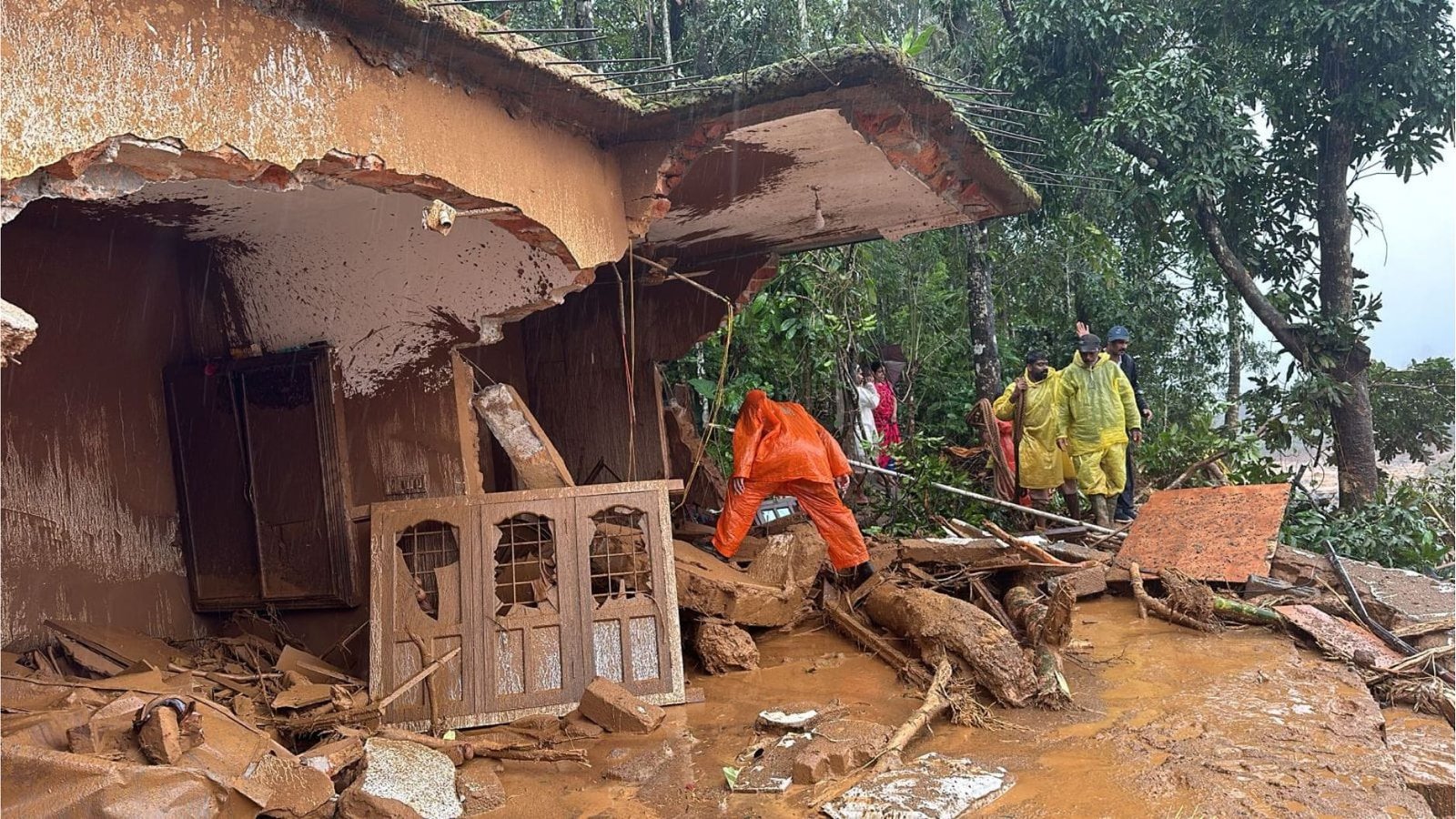Landslides are not new in Kerala during heavy rains. The devastating landslide in Wayanad which has left over 80 people dead and several others missing has again raised a serious question about Kerala’s preparedness and response to natural disasters especially during monsoon.
Heavy rains had been battering the region for days and the big question is – Did Kerala State Disaster Management Authority (KSDMA) fail to foresee the landslide-prone areas and evacuate residents in time?
A section of government officials are of the opinion that despite meteorological warnings and past experiences, the local authorities did not take adequate preventive measures to safeguard the lives of the residents. The tragedy occurred in the morning when a massive landslide struck a densely populated areas at Mundakkai, Chooralmala, Attamala, and Noolpuzha, burying homes and families under tons of debris.
Local residents have expressed their frustration and anger towards the disaster management authority for not acting promptly. “We had been experiencing heavy rains for days. But no one came to evacuate us or even warn us about the potential danger,” said Ramesh K, a resident.
Many argue that the KSDMA’s lack of a proactive approach and insufficient planning led to this disaster. Geologists and environmental scientists have long identified several areas in Wayanad as high-risk zones for landslides. Despite this, there was no visible effort to map these areas accurately and prepare an evacuation plan following heavy rains in the last few days.
Senior environmental journalist Viju B, who is also the author of ‘Flood and Fury: Ecological Devastation in the Western Ghats,’ said “the hilly terrains of Wayanad are prone to landslides, and changing environmental factors have only aggravated the risk. ‘The areas affected by landslides were already marked as high-risk areas. It’s surprising that people have not been evacuated to date despite the heavy rain in the district. Unregulated construction and development activities have been making the situation worse in an ecologically sensitive district like Wayanad,” he said.
“The lack of proper planning and monitoring is evident. The authorities need to use modern technology and tools to predict and prevent such disasters. It’s a matter of life and death,” said a senior geologist. “Evacuating people is not an easy task. The hilly districts of Kerala have become totally unpredictable when it comes to landslides caused by rains. We don’t know how a landslide in a hill situated a few kilometers away is going to affect a residential hamlet down the hill. The only option is to avoid hilly districts during the monsoon,” said another geologist.
The state government has now launched a massive rescue operation, involving the National Disaster Response Force (NDRF), local police, and volunteers. However, the chances of finding more survivors are dwindling as time passes.
There is a growing demand for accountability and better disaster management strategies. Residents are calling for a comprehensive review of the KSDMA’s protocols and immediate implementation of advanced early warning systems.
A research article titled “The Selection of Rain Gauges and Rainfall Parameters in Estimating Intensity-Duration Thresholds for Landslide Occurrence: Case Study from Wayanad (India)” published by researchers – Minu Treesa Abraham, Neelima Satyam, Ascanio Rosi, Biswajeet Pradhan and Samuele Segoni had even prepared a new landslide catalogue for Wayanad compiling information from different data sources including landslides that happened from 2010 to 2018 in the district. The study found that a rainfall of intensity 1mm h−1 of a one-day duration is potent enough to trigger landslides in Wayanad district. The study emphasized the importance of the preparation of landslide catalogues and determination of rainfall thresholds for Wayanad region. An effective Landslide Early Warning System (LEWS) is an immediate requirement in the region, and the study has to be further enhanced with state-of-the-art models developed for other parts in the world. The existing model can also be conceptually modified using precise field monitoring techniques as well. Attempts must be made to reduce the false alarms to develop an operational rainfall threshold model to function as a Landslide Early Warning System for the region.
Prime Minister Narendra Modi took to Twitter expressing shock and grief on the tragedy. “Distressed by the landslides in parts of Wayanad. My thoughts are with all those who have lost their loved ones and prayers with those injured. Rescue ops are currently underway to assist all those affected. Spoke to Kerala CM Shri Pinarayi Vijayan and also assured all possible help from the Centre in the wake of the prevailing situation there.”
Chief Minister Pinarayi Vijayan in a tweet said “A delegation of five ministers has been assigned in Wayanad to address the aftermath of the recent landslide and oversee ongoing relief efforts. Forest Minister A K Saseendran has already reached the affected area to assess the damage and coordinate immediate response measures.”



